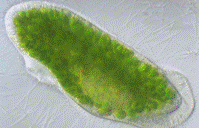Biological Sciences, School of

School of Biological Sciences: Faculty Publications
Document Type
Article
Date of this Version
6-1898
Abstract
The vegetative covering of the North American continent falls naturally into two great areas, forest and plain. At first thought it would seem that these were primary phytogeographical divisions, but a comparison with the vegetative covering of other continents proves the contrary. Considered as a phytogeographical feature, the North American forested area is an entity ; from a floristic or formational standpoint, it may be analyzed into several distinct portions of widely separated relationship. The ground-tone of the great bulk of the North American forests is that of the forests of British North America, which are closely related to those of middle-north Europe and Siberia, constituting with them the northern realm of Drude and the sub-arctic region of Engler. Three great belts extend southward from this northern mass, each undergoing profound changes in type, and becoming differentiated into well-characterized regions. The floristic separation of these regions from the northern forest-region is so great that the relationship is always much less close than that existing between the floral covering of British America and that of northern Eurasia, and in one or two cases it practically disappears.


Comments
Published in Botanical Gazette, Vol. 25, No. 6 (Jun., 1898), pp. 381-394.